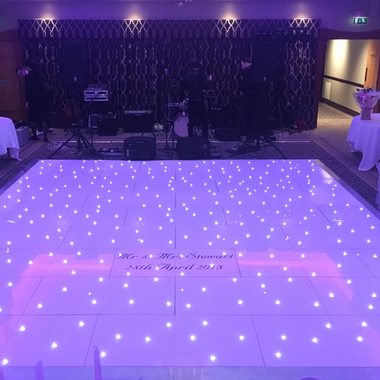
One notable pattern in interactive LED dancing floors is the integration of intelligent technology. Many new designs incorporate detectors that detect movement and modify the lighting in response. This means that the floor can change hues, patterns, and visuals based on how many individuals are dancing and where they are positioned. This responsiveness fosters a dynamic setting that promotes involvement and excitement. Additionally, some models allow participants to control the illumination through mobile apps, giving them the ability to customize their encounter in real-time.
Another crucial trend is the utilization of sustainable materials and power-saving technology. As ecological concerns increase, many creators are focusing on creating LED dance surfaces that are not only visually impressive but also eco-friendly. This comprises using repurposed materials for the floor's building and implementing power-efficient LED lights. These advancements help minimize the environmental footprint of gatherings while still providing a captivating aesthetic experience. By focusing on eco-friendliness, creators are attracting to a more ecologically conscious audience.
The integration of enhanced reality (AR) is also changing the interactive dance surface experience. AR technology allows participants to view digital graphics and animations overlaid on the physical world through their smartphones or AR spectacles. This can enhance the dance surface experience by introducing digital components that engage with the physical environment. For example, dancers might witness animated figures or visual effects that react to their movements, producing a distinctive and engaging atmosphere. This pattern is particularly appealing to millennial crowds who are familiar to digital interactions in their everyday activities.
Additionally, the design of responsive LED dance surfaces is becoming more versatile and modifiable. Many new models can be readily set up in various settings, from short-term events to long-term setups. This flexibility allows locations to develop customized experiences that address to various themes and audiences. Some models even feature interchangeable parts that can be reconfigured to form different shapes and arrangements. This flexibility not only enhances the aesthetic attractiveness but also allows for creative design in gathering planning.
In summary, the future of responsive light-emitting diode dance floors is being influenced by creative styling trends that focus on technology, eco-friendliness, enhanced reality, and versatility. These advancements are creating more engaging and captivating additional resources encounters for participants, making dance floors a key element of entertainment venues. As these trends continue to advance, they will likely reshape how people interact with music and motion, guaranteeing that responsive LED dancing surfaces remain a popular choice for gatherings and festivities.